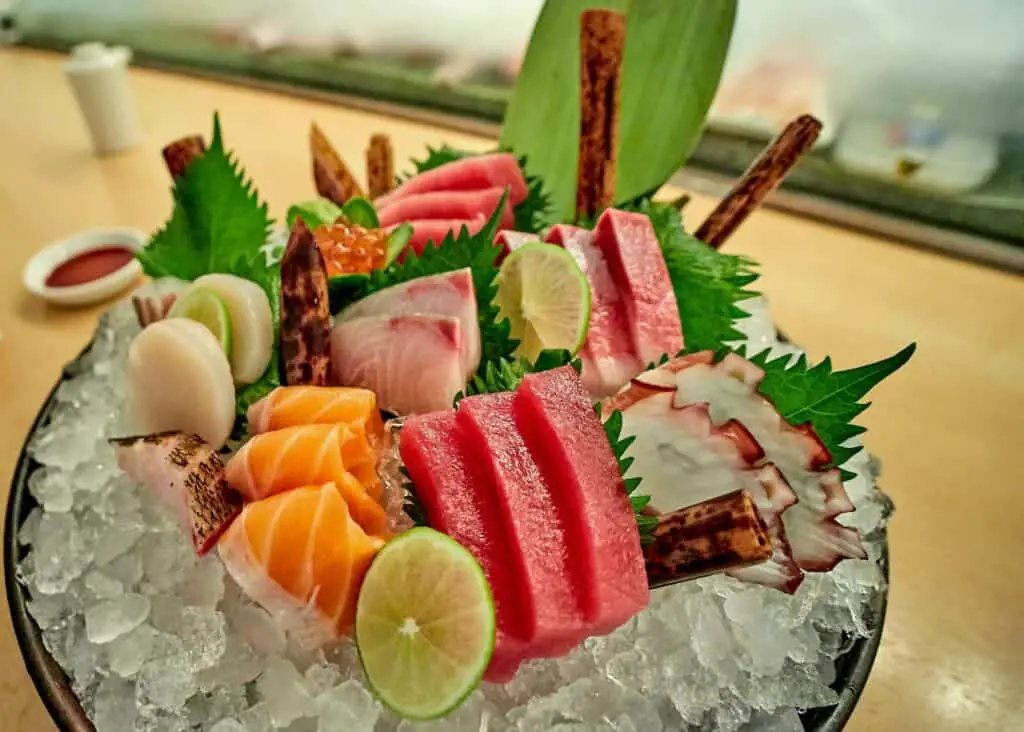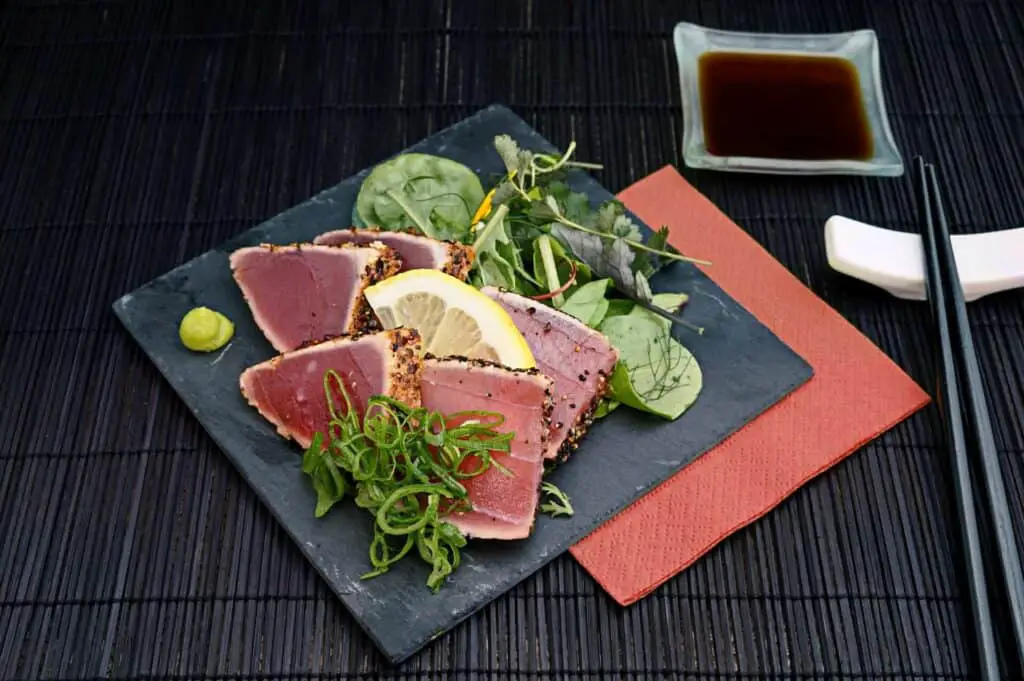All lovers of Japanese cuisine know about dishes such as sushi or sashimi. But what is sashimi grade, and how is it connected to this Japanese delicacy?
Sashimi-grade is a label used to point out fish that is safe to consume without previous heat treatment. To be sashimi grade, fish must be parasite and bacteria-free. That is why almost all fish species must be frozen for a specific time, not left at unsafe temperatures for long, and be treated in a sanitized environment.


The following article will provide all the answers about which fish can and can’t be labeled as sashimi-grade.
Sashimi-Grade Fish Is (Or Should Be) A Fish That Can Be Safely Consumed Raw
Sashimi-grade term is used for the highest-quality fish submitted to all the necessary prevention procedures so it can be consumed safely. This term is synonymous with sushi-grade, but keep in mind that neither is officially regulated.
When a fish is sashimi-grade, note it is labeled by the seller, not some official body. However, to be graded that way, a fish must be handled carefully and stored under specific conditions.
Name Origin of the Sushi-Grade Label
Why are the terms sashimi or sushi grades used to determine product quality? The answer lies in the nature of sushi and sashimi dishes. In both of them, one of the main ingredients is raw fish. Therefore, if a product is sashimi-grade, it can be consumed raw, whether you want to eat sushi, sashimi, or prepare any other raw fish delicacy.

What Dangers Does Eating Raw Fish Bring?
If not treated with extra care, raw fish can cause food poisoning. If a foodborne illness occurs, the infected person will feel symptoms such as abdominal pain, diarrhea, and vomiting. Although they don’t spoil sushi or sashimi taste, parasites are the most common source of food poisoning when it comes to consuming raw fish. Luckily, there is a way of preventing it.
Guidelines Issued by the US Food and Drug Administration
Even though there is no official set of rules every seller must meet, advice given by the Food and Drug Administration usually serves as such. That is why freezing the fish before selling it for raw consumption became a standard. Extremely low temperatures are known to kill parasites, so many fish species must be frozen for a specific period at a particular temperature.
Take a look at the table below to see the periods and temperatures the Food and Drug Administration suggests.
| Maximum temperature until sold | Maximum temperature when storing | |
| The first case | -4 °F | / |
| The second case | -31 °F | -31 °F for 15 hours |
| The third case | -31 °F | -4 °F for 24 hours |
Other Factors That Can Make Raw Fish Unsafe to Eat
Parasites are not the only organisms that can cause food illness – keep in mind that you can also endure food poisoning from bacterial contamination.
If the fish has been left at an unsafe temperature for extended periods, it can cause bacteria growth. Some bacteria can’t even be killed by freezing or even cooking, which is why this problem shouldn’t be treated lightly.
Aside from unsuitable temperatures, the cause of bacterial contamination can be inappropriate sanitation. Those working with raw fish must do it in a clean environment, with clean hands and tools. Have that in mind whether you want to buy sashimi or make it yourself.
What Raw Fish Are the Safest to Consume?
Although all fish can be contaminated with bacteria, salmon and large tuna species are the least prone to cause parasitic infection after consumption. Salmon is an aquacultured fish and, therefore, verified parasite-free.
On the other hand, not many documented cases connect illness with raw tuna consumption, which is why it’s considered safer.
However, that doesn’t mean that other species are not safe to consume raw. They only carry more possible risks for consumers – if not treated properly. Therefore, species such as yellowfin, bigeye, skipjack, and bluefin must be frozen before being sold.

Abuse of the Sashimi-Grade Term
The fact that sashimi-grade is arbitrary can represent an issue, so some tend to exploit this term in order to increase sales. This kind of marketing ploy can result in severe health problems for raw fish consumers.
That is why you should never put your complete trust in the sashimi-grade label but rely on your common sense as well. Before making your purchase, ensure you know:
- How does the owner determine the term sashimi-grade?
- How long is the fish kept in the shop?
- Is processing equipment sanitized according to the standards?
- Is the fish fresh (has reg gills, intact scales, firm flesh, and so on)?
Always Know What You Eat
Sashimi-grade label was created so a buyer can determine the highest quality fish that can be eaten even in a raw form. However, it shouldn’t be the only criteria you should follow when buying. Make sure the sashimi-grade fish is purchased only in reliable fish markets from sellers you can trust completely. Otherwise, what you thought was a sashimi-grade might be something far from it.